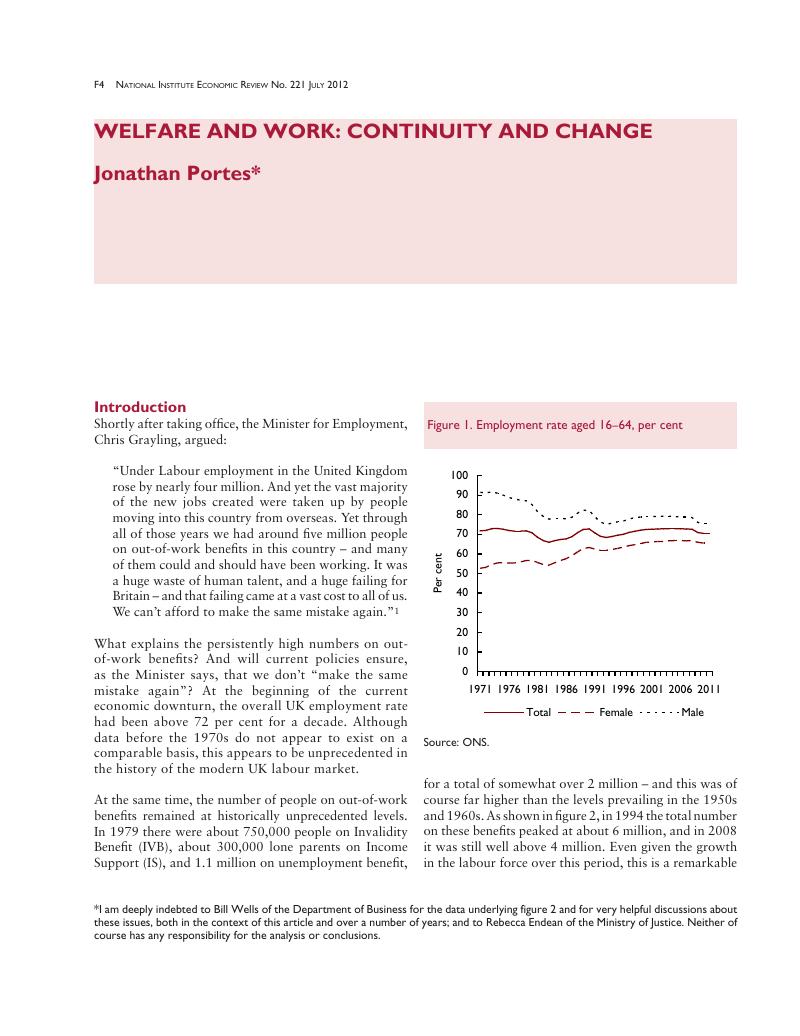Article contents
Welfare and Work: Continuity and Change
Published online by Cambridge University Press: 26 March 2020
Abstract

- Type
- Commentary
- Information
- Copyright
- Copyright © 2012 National Institute of Economic and Social Research
Footnotes
I am deeply indebted to Bill Wells of the Department of Business for the data underlying figure 2 and for very helpful discussions about these issues, both in the context of this article and over a number of years; and to Rebecca Endean of the Ministry of Justice. Neither of course has any responsibility for the analysis or conclusions.
References
- 1
- Cited by




